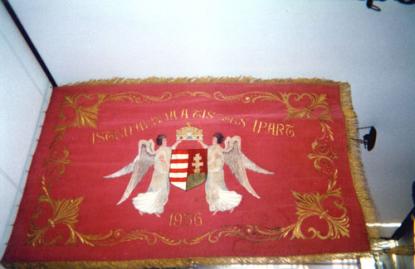2024. April 26. Friday
Neogrády László Region Historical Collection - Budapest
|
|
Address: 1043, Budapest Berda József utca 48.
Phone number: (1) 370-0652
E-mail: helytorteneti@ujkk.hu
Opening hours: Temporarily closed.
|
Our exhibition represents the history of Újpest through relics found in this region. Our colelction possesses but few archaeological relics. During excavations prosecuted along the Danube stone tools were discovered, but only a number of them are owned by us, for most of them are exhibited in the Budapest Historical Museum.

The real history of Újpest began in the year 1808. This was when Káposztásmegyerpuszta and Fót were purchased by Mrs.Keglevich Ágostonné. She purchased the Fót lordship for the children descended from her first husband, and gave it - by inheritance - to on of the three called István Károlyi.
The earl, following the US type grange farming, rented out some parts of the land to those moving to the area from other places. Since 1840 the contryts had been permanently drawn, supporting all citizens prosecuting some independent industrial activity. That way the population fast increased and the settlement called Újpest was being mentioned as an independent village (later town) from 1841 onwards.
The establishment of a wide education system was supported by the Károlyi family and other oppulent citizens. In 1910 the town also possessed a theatre. Several hospitals were built, separate for children and the epidemically deseased. Social institutions were also established (elderly homes, orphanages etc.)
The transportation of the town was well developed. The first railway opened here (Budapest-Vác) was connected to the town by regular bus and tram transportations. In 1950 the town was attached to Budapest as the 4th district. The new permanent exhibition follows up the history of the place up to this date.

The real history of Újpest began in the year 1808. This was when Káposztásmegyerpuszta and Fót were purchased by Mrs.Keglevich Ágostonné. She purchased the Fót lordship for the children descended from her first husband, and gave it - by inheritance - to on of the three called István Károlyi.
The earl, following the US type grange farming, rented out some parts of the land to those moving to the area from other places. Since 1840 the contryts had been permanently drawn, supporting all citizens prosecuting some independent industrial activity. That way the population fast increased and the settlement called Újpest was being mentioned as an independent village (later town) from 1841 onwards.
The establishment of a wide education system was supported by the Károlyi family and other oppulent citizens. In 1910 the town also possessed a theatre. Several hospitals were built, separate for children and the epidemically deseased. Social institutions were also established (elderly homes, orphanages etc.)
The transportation of the town was well developed. The first railway opened here (Budapest-Vác) was connected to the town by regular bus and tram transportations. In 1950 the town was attached to Budapest as the 4th district. The new permanent exhibition follows up the history of the place up to this date.
